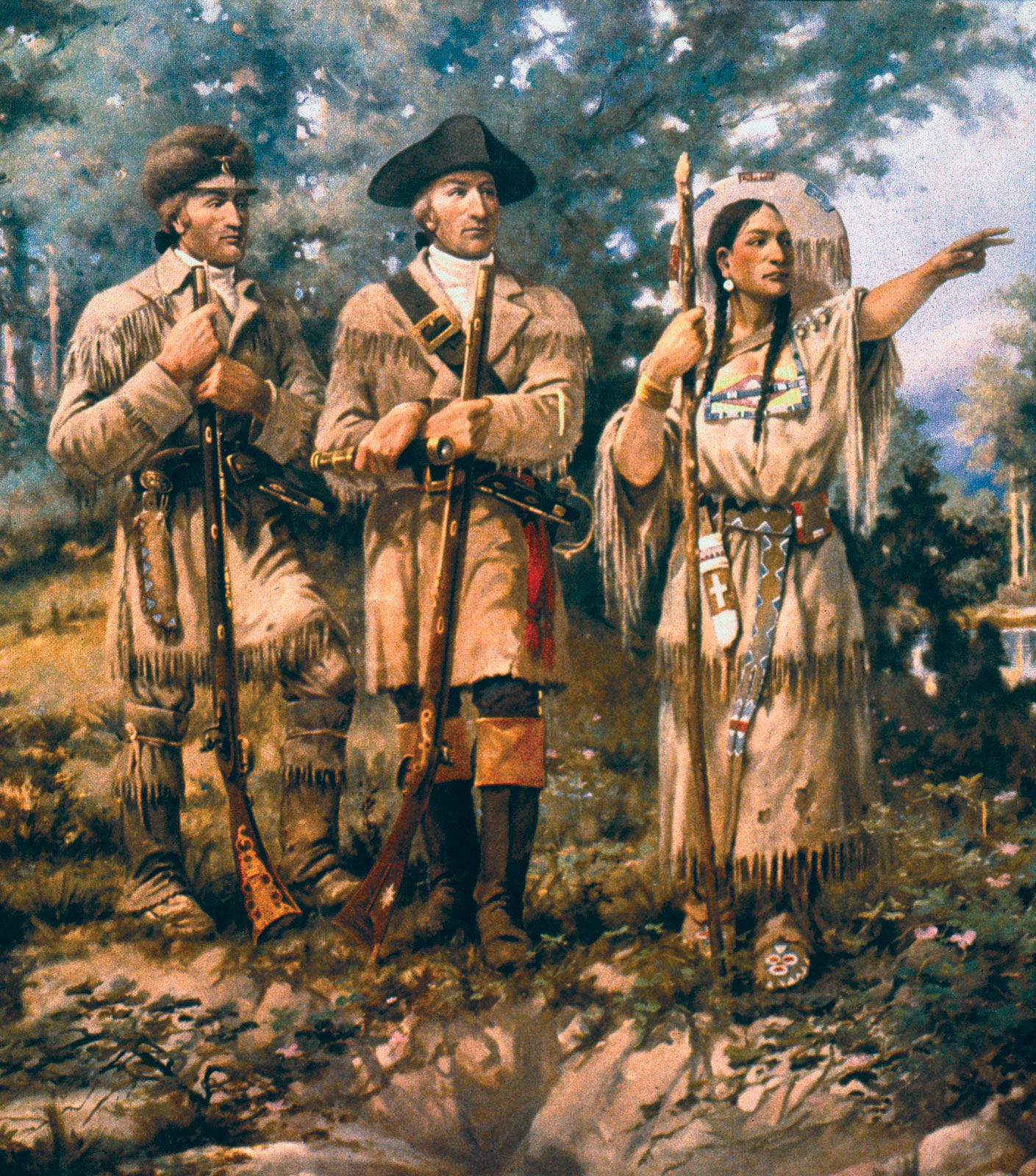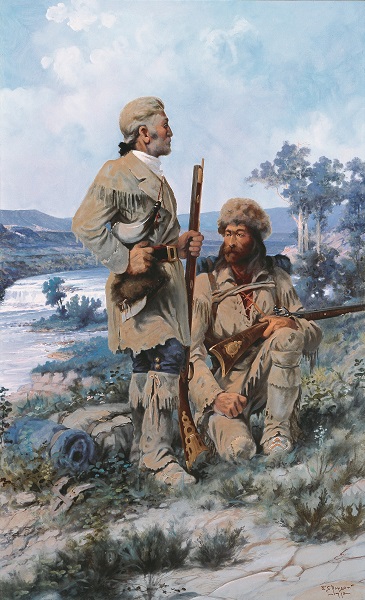Edgar Samuel Paxson on:
[Wikipedia]
[Google]
[Amazon]
Edgar Samuel Paxson (April 25, 1852 – November 9, 1919) was an American frontier painter, scout, soldier and writer, based mainly in 




Custer's Last Stand – Artist E.S. Paxson
The painting can now be found in the
Montana
Montana () is a state in the Mountain West division of the Western United States. It is bordered by Idaho to the west, North Dakota and South Dakota to the east, Wyoming to the south, and the Canadian provinces of Alberta, British Columb ...
. He is best known for his portraits of Native Americans in the Old West
The American frontier, also known as the Old West or the Wild West, encompasses the geography, history, folklore, and culture associated with the forward wave of American expansion in mainland North America that began with European colonial ...
and for his depiction of the Battle of Little Bighorn
The Battle of the Little Bighorn, known to the Lakota and other Plains Indians as the Battle of the Greasy Grass, and also commonly referred to as Custer's Last Stand, was an armed engagement between combined forces of the Lakota Sioux, Nort ...
in his painting "Custer's Last Stand".





Biography
Paxson was born in 1852 to a Quaker family in East Hamburg New York. He spent most of his childhood in the woodlands of New York and Pennsylvania, learning to hunt and trap game with the help of his uncles. At age ten he worked as a drummer boy for new recruits during theAmerican Civil War
The American Civil War (April 12, 1861 – May 26, 1865; also known by other names) was a civil war in the United States. It was fought between the Union ("the North") and the Confederacy ("the South"), the latter formed by states ...
. His urge to explore the American frontier was fostered by uncles who had traveled west for the California Gold Rush, returning with stories of Indians, dangerous wildlife, and the harsh trek across America, and from family friends who lived in the New York frontier when the Seneca Nation ranged the woodlands. Inspired by his meetings with Kit Carson
Christopher Houston Carson (December 24, 1809 – May 23, 1868) was an American frontiersman. He was a fur trapper, wilderness guide, Indian agent, and U.S. Army officer. He became a frontier legend in his own lifetime by biographies and ...
and Captain Jack Crawford (the "Poet Scout") in New York, he became restless to explore and by age 20 was travelling across America, ranging from Kansas
Kansas () is a state in the Midwestern United States. Its capital is Topeka, and its largest city is Wichita. Kansas is a landlocked state bordered by Nebraska to the north; Missouri to the east; Oklahoma to the south; and Colorado to th ...
to Canada
Canada is a country in North America. Its ten provinces and three territories extend from the Atlantic Ocean to the Pacific Ocean and northward into the Arctic Ocean, covering over , making it the world's second-largest country by tot ...
. Eventually he made a home in Deer Lodge, Montana
Deer Lodge is a city in and the county seat of Powell County, Montana, United States. The population was 2,938 at the 2020 census.
Description
The city is perhaps best known as the home of the Montana State Prison, a major local employer. ...
with his wife Laura Millicent and child Loren.
Once settled in Deer Lodge, Paxson began to take work painting signage, and then painting stage sets for the Cottonwood Theater in Deer Lodge. He lived comfortably in Deer Lodge, still relatively obscure as an artist, raising his four children with Laura, until the Spanish–American War
, partof = the Philippine Revolution, the decolonization of the Americas, and the Cuban War of Independence
, image = Collage infobox for Spanish-American War.jpg
, image_size = 300px
, caption = (cloc ...
in 1898, when at age 46 he led Company "G"of the Butte Volunteers into battle in the jungles of Manila. Camp Paxson, a National Registered Historic Place, is named in his honor.
Custer's Last Stand
Inspiration
Paxson repeatedly stated in interviews that his initial spark of inspiration to take to the canvas was inspired by the violence and drama of theBattle of Little Bighorn
The Battle of the Little Bighorn, known to the Lakota and other Plains Indians as the Battle of the Greasy Grass, and also commonly referred to as Custer's Last Stand, was an armed engagement between combined forces of the Lakota Sioux, Nort ...
, and by the character of George Armstrong Custer
George Armstrong Custer (December 5, 1839 – June 25, 1876) was a United States Army officer and cavalry commander in the American Civil War and the American Indian Wars.
Custer graduated from West Point in 1861 at the bottom of his class, b ...
. The battle had taken place as he made his way west to Montana, and stayed with him as a reminder of the brutality and tragedy of the Old West
The American frontier, also known as the Old West or the Wild West, encompasses the geography, history, folklore, and culture associated with the forward wave of American expansion in mainland North America that began with European colonial ...
.
Research
He started researching the battle shortly after arriving in Montana, interviewing Indians who had participated in it and soldiers who had first arrived on the scene. Having built a good reputation with both American soldiers and many Native American tribes, he was able to interview parties from both sides, including a Sioux chief named Gall, a Cheyenne warrior named Two Moon, andBrigadier General
Brigadier general or Brigade general is a military rank used in many countries. It is the lowest ranking general officer in some countries. The rank is usually above a colonel, and below a major general or divisional general. When appointed ...
Edward Settle Godfrey. From their interviews he made detailed journals about the equipment, attire, and physical location of each man on the battlefield. Individual figure studies of each man on the battlefield were made, and he created in pen and ink a scaled down version to outline the figures.
Reaction
It took Paxson six years to complete the painting which he allowed an associate to take on tour around America, charging twenty-five cents to view it.Brigadier General
Brigadier general or Brigade general is a military rank used in many countries. It is the lowest ranking general officer in some countries. The rank is usually above a colonel, and below a major general or divisional general. When appointed ...
Edward Settle Godfrey was brought to tears by the accuracy and ferocity of the painting, as was Elizabeth Custer. In 1963 Harold McCracken, the noted historian and Western art authority, deemed Paxson's painting "the best pictoral representation of the battle" and "from a purely artistic standpoint...one of the best if not the finest pictures which have been created to immortalize that dramatic event."Buffalo Bill Center of the West
The Buffalo Bill Center of the West, formerly known as the Buffalo Bill Historical Center, is a complex of five museums and a research library featuring art and artifacts of the American West located in Cody, Wyoming. The five museums include the B ...
, in Cody, Wyoming
Cody is a city in Northwest Wyoming and the seat of government of Park County, Wyoming, United States. It is named after Colonel William Frederick "Buffalo Bill" Cody for his part in the founding of Cody in 1896.
The population was 10,066 at th ...
.
Public murals
In 1912 Paxson was commissioned to paint eight murals in theMissoula, Montana
Missoula ( ; fla, label= Séliš, Nłʔay, lit=Place of the Small Bull Trout, script=Latn; kut, Tuhuⱡnana, script=Latn) is a city in the U.S. state of Montana; it is the county seat of Missoula County. It is located along the Clark Fork ...
county courthouse. The murals took 16 months to complete, and still stand in the entrance hall where they were originally placed. The subjects include Sacagawea, and the journey of Lewis and Clark. He also created six scenes depicting significant events in early Montana History for the House of Representatives Lobby in the Montana State Capitol
The Montana State Capitol is the state capitol of the U.S. state of Montana that houses the Montana State Legislature which is located in the state capital of Helena at 1301 East Sixth Avenue. The building was constructed between 1896 and 1902 w ...
.
Friendship With Charlie Russell
Edgar and fellow Montanan,Charles Marion Russell
Charles Marion Russell (March 19, 1864 – October 24, 1926), also known as C. M. Russell, Charlie Russell, and "Kid" Russell, was an American artist of the American Old West. He created more than 2,000 paintings of cowboys, Native Americans, an ...
met in 1908, and Russell later visited Paxson's Missoula studio. These two artists had an amicable relationship. In 1915, they marshaled a parade together in downtown Missoula. But the two artists are often compared, at Paxson's expense. A careful look reveals that their styles and interests were distinct and both of their visions enrich our understanding of frontier culture. Russell was recognized for his renditions of the cowboys and range land of the central and eastern parts of the state. Paxson, on the other hand, was much more intrigued with the mountainous western Montana landscape and its inhabitants of fur trappers and Native Americans. Paxson was often praised for his attention to historic detail, as opposed to perhaps a more romantic view of the untamed west. His murals at the Missoula County Courthouse and the State Capitol depict scenes largely faithful to the historic record. They include events such as stops on the Lewis and Clark journey, the signing of the treaty at Council Grove, and the journey of the Salish out of the Bitterroot Valley.
Following Paxson's death, Russell offered a tribute to the artist: "Paxson has gone, but his pictures will not allow us to forget him. His work tells me that he loved the Old West, and those that love her I count as friends. Paxson was my friend, and today the west that he knew is history that lives in books. His brush told stories that people like to read. … The iron heel of civilization has stamped out nations of men, but it has never been able to stamp out pictures, and Paxson was one of the men gifted to make them. I am a painter, too, but Paxson has done some things that I cannot do. He was a pioneer and a pioneer painter … Paxson loved Montana. May the land where he has gone be even more beautiful than the mountains that he loved."
References